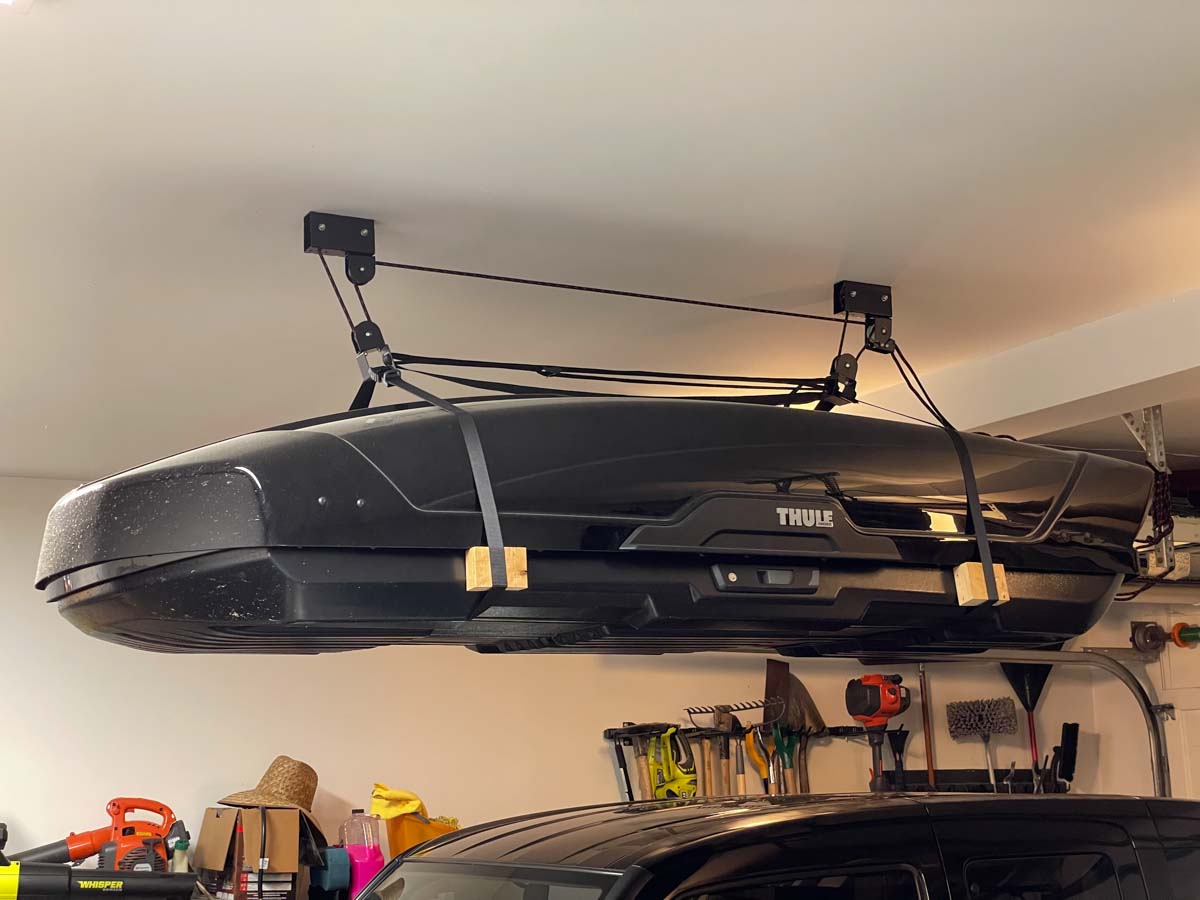

Articles
How To Store Roof Cargo Box
Modified: May 6, 2024
Learn the best way to store your roof cargo box in our informative articles. Whether it's for short-term or long-term storage, we've got you covered!
(Many of the links in this article redirect to a specific reviewed product. Your purchase of these products through affiliate links helps to generate commission for Storables.com, at no extra cost. Learn more)
Introduction
Welcome to our comprehensive guide on how to store a roof cargo box. If you love outdoor adventures or frequently embark on road trips, a roof cargo box can be a game changer. It provides you with additional storage space to safely transport your gear and belongings, allowing you to maximize your vehicle’s capacity.
Choosing the right roof cargo box, installing it properly, and securing your items are essential steps to ensure a smooth and worry-free journey. In this article, we will walk you through each of these steps, providing helpful tips and insights to make your storage process hassle-free.
Before we dive into the details, it’s crucial to note that the safety of your items and the stability of your vehicle should always be the top priority. By following the guidelines laid out in this article, you can enjoy peace of mind while on the road and make the most out of your adventures.
So, let’s get started and discover the most effective ways to store a roof cargo box!
Key Takeaways:
- Choose the right roof cargo box by considering size, material, security features, and compatibility with your vehicle’s roof rack system. This ensures a hassle-free and secure storage solution for your belongings during travels.
- Safely store and maintain your roof cargo box by properly preparing your vehicle, securing your items, driving with caution, and following maintenance guidelines. This ensures a worry-free and enjoyable experience while maximizing your vehicle’s storage capacity.
Read more: How To Store Cargo Box In Garage
Choosing the Right Roof Cargo Box
When it comes to selecting a roof cargo box, there are several factors to consider to ensure you make the right choice. Here are some key considerations:
Size and Capacity: Roof cargo boxes come in various sizes and capacities. Consider the amount of storage space you will need for your trips. Are you planning to transport large or bulky items, or will you mainly use it for smaller gear? Take measurements of your vehicle’s roof to ensure the cargo box will fit properly.
Material and Durability: Roof cargo boxes are typically made of either plastic or fiberglass. Plastic boxes are lightweight and more affordable, but they may not be as durable as fiberglass options. Fiberglass boxes are sturdier, more weather-resistant, and provide better security for your belongings. Consider the climate and conditions you frequently encounter during your travels.
Opening Mechanism: Roof cargo boxes can have different opening mechanisms, such as dual side-opening or rear-opening. Dual side-opening boxes provide easier access to your belongings from both sides of the vehicle. Rear-opening boxes may be more convenient for loading and unloading items. Choose an opening mechanism that suits your preferences and needs.
Security Features: Look for roof cargo boxes that offer robust security features. These may include locking mechanisms to prevent theft and tampering, as well as reinforced construction to protect your belongings from damage.
Compatibility: Ensure that the roof cargo box you choose is compatible with your vehicle’s roof rack system. Check the weight capacities and dimensions specified by the manufacturer to guarantee a proper fit and safe installation.
Budget: Set a budget for your roof cargo box and consider the features that are most important to you. While it’s tempting to opt for the most affordable option, investing in a high-quality and reliable roof cargo box will ensure its longevity and performance.
By evaluating these factors and considering your specific needs, you can select a roof cargo box that meets your requirements and enhances your travel experience. Now that you have chosen the perfect roof cargo box, let’s move on to the next step – preparing your vehicle!
Preparing Your Vehicle
Before installing a roof cargo box, it’s important to prepare your vehicle to ensure a smooth and secure fit. Follow these steps to properly prepare your vehicle:
Clean Your Roof: Thoroughly clean the roof of your vehicle, removing any dirt, debris, or grime. This will help create a clean and smooth surface for the roof cargo box to be mounted onto. Use a mild detergent and water to clean the roof, and make sure it is completely dry before proceeding.
Inspect Your Roof Rack: If your vehicle already has a roof rack system, inspect it for any signs of damage or wear. Ensure that the roof rack is securely attached to your vehicle and that all components are in proper working condition. If any repairs or replacements are needed, address them before installing the roof cargo box.
Add a Roof Rack, if Necessary: If your vehicle does not have a roof rack system, you will need to install one before attaching a roof cargo box. Consult your vehicle’s manual or seek assistance from a professional to determine the best roof rack system for your vehicle model. Follow the manufacturer’s instructions for proper installation.
Check Weight Capacity Limits: Consult your vehicle’s manual or the roof rack manufacturer’s guidelines to determine the maximum weight capacity that your roof can handle. This information is crucial for ensuring the safe and secure installation of the roof cargo box. Never exceed the weight capacity limits specified by the manufacturer.
Consider Wind Resistance: Keep in mind that adding a roof cargo box to your vehicle will increase wind resistance and may impact your vehicle’s aerodynamics. Be prepared for potential changes in fuel efficiency and drive with caution, especially in windy conditions.
Organize Your Items: Before loading your items into the roof cargo box, take the time to organize and pack them efficiently. Place heavier items at the bottom and distribute the weight evenly to maintain stability. Use padding or soft items to protect fragile belongings.
By preparing your vehicle properly, you are setting the foundation for a secure and hassle-free installation of the roof cargo box. Once your vehicle is ready, it’s time to move on to the next step – installing the roof cargo box!
Installing the Roof Cargo Box
Installing a roof cargo box requires careful attention to ensure a secure and stable attachment. Follow these steps to properly install your roof cargo box:
Refer to the Manual: Familiarize yourself with the instructions provided by the manufacturer of your specific roof cargo box. These instructions will guide you through the installation process and provide any specific guidelines that are unique to your model.
Position the Cargo Box: Lift the roof cargo box and carefully position it on the roof of your vehicle. Ensure that it is centered and aligned with your vehicle’s roof rack system. If you have a dual side-opening box, consider which side you prefer to have easier access to when loading and unloading items.
Attach the Cargo Box to the Roof Rack: Depending on the design of your cargo box and roof rack system, there are different attachment methods. Common methods include U-bolts, clamps, or brackets. Follow the instructions provided by the manufacturer to securely fasten the cargo box to the roof rack. Tighten the attachments firmly, but be cautious not to overtighten and potentially damage the cargo box or roof rack.
Check Stability: With the cargo box attached, gently shake and rock it to ensure it is secure and stable. Make sure there is no excessive movement or wobbling. If you notice any instability, double-check the attachment points and tighten them if necessary. It’s important to ensure the cargo box is firmly locked onto the roof rack for safe transportation.
Test the Opening Mechanism: If your roof cargo box has a dual side-opening mechanism or another type of opening feature, test it before loading any items. Make sure the mechanism operates smoothly and that it securely locks into place when closed.
Check Clearance: To avoid any interference with your vehicle, verify that the roof cargo box does not obstruct the opening of doors, sunroofs, or antennas. Check the clearance with all vehicle components to ensure they can function properly without any limitations caused by the cargo box.
Double-Check: Once the roof cargo box is installed, take a moment to visually inspect and double-check the attachment points. Ensure that everything is secure and there are no loose or protruding components that could pose a safety hazard.
By following these installation steps, you can safely and securely attach your roof cargo box to your vehicle. With the cargo box properly installed, it’s time to move on to the next step – securing your items inside the box!
Securing Your Items in the Box
Properly securing your items inside the roof cargo box is crucial to prevent damage, ensure stability, and maintain safety during transport. Follow these tips to securely pack and organize your belongings:
Use Organizational Tools: Utilize storage bins, packing cubes, or dividers to keep your items organized and prevent them from shifting during transit. This will help maintain stability and make it easier to locate specific items when needed.
Secure Fragile Items: Fragile items such as glassware, electronics, or valuables should be wrapped in bubble wrap or placed in cushioned packaging to provide extra protection. Storing them in the center of the cargo box, surrounded by softer items, can minimize the risk of damage.
Maximize Space: Utilize every inch of space in your roof cargo box by strategically packing your items. Place larger, bulkier items at the bottom and sides of the box, and fill any gaps with smaller items or soft clothing to ensure a secure fit.
Balance the Weight: Distribute the weight of your items evenly throughout the cargo box. Heavy items should be placed closer to the vehicle’s centerline for better weight distribution. Avoid overloading one side of the box, as this can cause instability during travel.
Secure Loose Items: Use bungee cords, cargo nets, or adjustable straps to secure any loose items or prevent them from shifting during transit. This will minimize the risk of damage and ensure the stability of your items and the cargo box.
Consider Weather Conditions: If you anticipate encountering rain, snow, or other adverse weather conditions during your journey, consider using waterproof bags or covers for additional protection. This will help keep your items dry and unaffected by external elements.
Test for Stability: Before hitting the road, give the cargo box a gentle shake to ensure that your items are securely packed and there is no excessive movement or shifting. If you notice any instability, readjust and secure your items accordingly.
Document Your Inventory: It’s always a good practice to create an inventory checklist of the items stored in your roof cargo box. This way, you can easily verify that everything is accounted for when you arrive at your destination.
By following these guidelines, you can ensure that your items are securely packed and protected inside the roof cargo box, giving you peace of mind and allowing you to enjoy your journey without worry. Now that your items are all set, let’s move on to the next step – securing the roof cargo box to your vehicle!
When storing a roof cargo box, make sure to clean it thoroughly to remove any dirt or debris. Store it in a dry, cool place to prevent mold and mildew growth. Cover it with a protective tarp to keep it safe from the elements.
Read more: How To Store Thule Roof Box
Securing the Roof Cargo Box to Your Vehicle
Securing the roof cargo box to your vehicle is essential for a safe and worry-free journey. Properly securing the cargo box will prevent it from shifting or becoming detached while on the road. Here are some steps to securely fasten the roof cargo box:
Tighten Mounting Hardware: Double-check that all the mounting hardware, such as U-bolts, clamps, or brackets, is securely tightened. Use the appropriate tools to ensure a firm and stable connection between the cargo box and the roof rack of your vehicle.
Verify Locking Mechanism: If your roof cargo box has a locking mechanism, make sure it is engaged. This will prevent the box from accidentally opening while driving and help to secure your items inside.
Check for Overhang: Take a moment to assess if there is any overhang of the cargo box beyond the dimensions of your vehicle’s roof. It’s important to ensure that the cargo box does not protrude excessively, as it could potentially interfere with your vehicle’s handling or cause damage to other vehicles or objects.
Ensure Proper Weight Distribution: Confirm that the weight inside the cargo box is evenly distributed. This will help maintain the balance of your vehicle and minimize the impact on its handling and stability. If necessary, readjust the positioning of items to achieve an optimal weight distribution.
Test for Stability: Give the roof cargo box a gentle shake to ensure that it is securely fastened to the roof rack. There should be no excessive movement or wobbling. If you notice any instability or looseness, reexamine the attachment points and tighten them further if needed.
Lock the Roof Cargo Box: If your roof cargo box is equipped with a locking mechanism, use it to secure the box. This will provide an extra layer of protection against theft and unauthorized access to your belongings.
Inspect Periodically: During long trips or stressful driving conditions, it is beneficial to periodically check the roof cargo box for any signs of loosening or instability. Stop in a safe location and visually inspect the attachment points to ensure everything remains secure.
Be Mindful of Height Clearance: Keep in mind that the height of your vehicle will increase with the addition of a roof cargo box. Pay close attention to clearances when entering structures such as garages, parking lots, or low hanging objects to avoid potential damage to the cargo box or your vehicle.
By following these steps, you can ensure that the roof cargo box is securely fastened to your vehicle, providing a stable and safe storage solution for your belongings. With the cargo box securely attached, you are ready to hit the road safely. Stay tuned for the next section on safety tips for driving with a roof cargo box!
Safety Tips for Driving with a Roof Cargo Box
Driving with a roof cargo box requires some additional precautions to ensure a safe and enjoyable journey. Here are some safety tips to keep in mind:
Drive with Caution: Be mindful of the increased height of your vehicle due to the roof cargo box. Take note of low clearance areas such as bridges, overpasses, and drive-through structures. Adjust your driving accordingly and drive cautiously to avoid any collisions or damage to the cargo box.
Check for Stability: Regularly check the roof cargo box and its mounting hardware for stability during stops. Look for any signs of loosening or movement. If you notice any issues, re-tighten the attachments as necessary to maintain stability during your journey.
Reduce Speed: Due to the added weight and wind resistance from the roof cargo box, it is advisable to drive at a moderate speed. This will help maintain control of your vehicle, especially in windy conditions, and minimize the impact on your vehicle’s fuel efficiency.
Anticipate Handling Changes: Be aware that the handling dynamics of your vehicle may be affected with the addition of a roof cargo box. Allow for longer braking distances and anticipate a slight increase in body roll during turns. Drive with extra caution and adapt to these changes as needed.
Secure Loose Items: Before hitting the road, ensure that all items inside the roof cargo box are properly secured and there are no loose objects that could shift or potentially fall out while driving. Double-check the attachments and consider using additional bungee cords or cargo nets to secure any items that may be at a higher risk of movement.
Stay Within Weight Limits: Ensure that you do not exceed the weight limits specified by the manufacturer of your roof cargo box or your vehicle’s roof rack system. Overloading the cargo box can lead to instability and compromise the safety of your vehicle. Always refer to the manufacturer’s guidelines for weight capacity.
Be Mindful of Height Clearance: Pay close attention to height clearance limitations, particularly when entering parking garages, drive-thrus, or low-clearance areas. Avoid any potential damage to the cargo box or your vehicle by carefully assessing clearance before proceeding.
Regularly Check Attachment Points: During long trips, it’s important to periodically check the attachment points of the roof cargo box to ensure everything remains tightly secured. Make stops in safe locations to visually inspect the attachments and tighten them if needed.
Monitor Fuel Efficiency: Be aware that driving with a roof cargo box may impact your vehicle’s fuel efficiency. Keep an eye on your fuel consumption and adjust your driving habits if necessary. Consider removing the roof cargo box when not in use to improve fuel efficiency on longer trips.
Following these safety tips will help ensure a safe and pleasant driving experience when traveling with a roof cargo box. By taking the necessary precautions, you can have peace of mind knowing that your belongings are secure and your vehicle is protected. Now, let’s move on to the next section on maintaining and cleaning your roof cargo box!
Maintaining and Cleaning Your Roof Cargo Box
Maintaining and cleaning your roof cargo box is important to ensure its longevity, performance, and overall appearance. Follow these tips to keep your roof cargo box in top condition:
Regular Inspection: Periodically inspect your roof cargo box for any signs of wear, damage, or loosening of attachment points. Look for cracks, dents, or other structural issues that may compromise the integrity of the box. Address any concerns promptly to prevent further damage.
Remove Excess Weight: When you’re not using your roof cargo box, remove any unnecessary weight from it. This will help prolong the lifespan of the box and reduce strain on the mounting hardware and your vehicle’s roof rack system.
Remove Debris: After each trip, remove any debris or dirt that may have accumulated on the roof cargo box. Use a soft brush or cloth to gently wipe away dust, leaves, and other debris. This will prevent dirt from becoming embedded in the box’s surface and potentially causing scratches or damage.
Clean with Mild Soap and Water: For a thorough cleaning, use a mild detergent mixed with water to wash the roof cargo box. Apply the soapy solution with a sponge or cloth, and gently scrub the surface. Rinse off the soap thoroughly with clean water and allow the box to air dry completely before storing it.
Avoid Harsh Chemicals: Avoid using harsh chemicals, abrasive cleaners, or solvents to clean the roof cargo box, as they can cause damage to the box’s material and finish. Stick to mild soap and water for safe and effective cleaning.
Protect from Sun Exposure: Prolonged exposure to UV rays can cause fading and deterioration of the roof cargo box’s material. When not in use, consider covering the box with a protective cover or store it in a shaded area to minimize sun exposure.
Keep the Lock and Hinges Lubricated: If your roof cargo box has a locking mechanism or hinges, periodically lubricate them with a silicone-based lubricant to ensure smooth operation and prevent rust or corrosion.
Store Properly: When you’re not using the roof cargo box, store it in a clean and dry area. Optimal storage locations include a garage, shed, or any covered space that protects the box from harsh weather conditions.
Follow Manufacturer’s Instructions: Always refer to the manufacturer’s instructions for any specific maintenance or cleaning guidelines they provide. This will ensure that you are properly caring for your specific roof cargo box model.
By following these maintenance and cleaning tips, you can extend the lifespan of your roof cargo box and keep it in excellent condition for years to come. Now that you know how to maintain and clean your roof cargo box, let’s move on to the final section – removing the roof cargo box.
Removing the Roof Cargo Box
Removing the roof cargo box is a relatively straightforward process. Whether you need to remove it for storage or to use your vehicle without the box, follow these steps to safely and efficiently remove the roof cargo box:
Empty the Cargo Box: Before removing the roof cargo box, ensure that it is completely empty. Take out all belongings and secure them separately.
Prepare the Tools: Gather the necessary tools, such as a wrench or screwdriver, as specified by the manufacturer of your roof cargo box. The specific tools required will depend on the type of attachment system used.
Loosen Mounting Hardware: Locate the mounting hardware that attaches the roof cargo box to the roof rack. Use the appropriate tool to carefully loosen the bolts, screws, or clamps holding the box in place. Be cautious not to remove them completely yet.
Release the Attachment Points: Once the mounting hardware is loosened, proceed to release the attachment points one by one. Follow the manufacturer’s instructions on how to detach the roof cargo box from the roof rack. This may involve lifting or sliding the box off the rack.
Set Aside the Mounting Hardware: As you remove the roof cargo box, set aside the mounting hardware in a safe place. Keep them together to prevent any loss or confusion when reinstalling the box in the future.
Place the Roof Cargo Box in Storage: If you are removing the roof cargo box for storage, carefully place it in a designated storage area. Ensure that the area is clean, dry, and protected from the elements. Covering the box with a protective cover can also provide an extra layer of protection.
Reinstall Roof Rack Components: If you removed any roof rack components to accommodate the roof cargo box, now is the time to reinstall them. Consult your vehicle’s manual or seek help from a professional to ensure proper reinstallation.
Inspect the Roof and Box: After the roof cargo box is removed, take a moment to inspect both the roof and the box for any signs of damage or wear. Address any issues promptly to maintain the integrity of your vehicle and to ensure the readiness of the roof cargo box for future use.
By following these steps, you can safely and efficiently remove the roof cargo box from your vehicle. Whether you are storing the box or temporarily removing it, proper removal and storage will help maintain the condition of both the box and your vehicle. With the roof cargo box removed, you’re now ready to conclude your journey or prepare for the next adventure!
Read also: 10 Best Roof Rack Cargo Carrier For 2024
Conclusion
Congratulations! You have successfully learned how to store a roof cargo box and mastered the essential steps for a seamless and secure experience. By choosing the right roof cargo box, preparing your vehicle, installing the box properly, securing your items, and following safety guidelines, you can enjoy worry-free travels and maximize the storage capacity of your vehicle.
Remember to always choose a roof cargo box that suits your needs in terms of size, capacity, material, and security features. Prepare your vehicle by cleaning the roof, inspecting the roof rack, and ensuring compatibility. Install the roof cargo box securely, taking care to tighten the mounting hardware and check for stability.
When securing your items, organize them effectively, distribute weight evenly, and secure fragile and loose items properly. Drive with caution, adjusting your speed to accommodate for the added weight and wind resistance of the roof cargo box. Regularly inspect the box and attachments for stability and address any issues promptly.
Maintaining and cleaning your roof cargo box will help prolong its lifespan. Regularly inspect it for damage, remove debris, and clean with mild soap and water. Store it properly in a clean and dry area when not in use.
Lastly, when it’s time to remove the roof cargo box, follow the appropriate steps, store it safely, and inspect both the vehicle and the box for any signs of damage.
By following these comprehensive guidelines, you can ensure a safe, convenient, and enjoyable experience with your roof cargo box. So, whether you’re embarking on a long road trip or simply need extra storage for your outdoor adventures, you can confidently and efficiently store your belongings with a roof cargo box. Now, get out there and make the most of your journeys with the added convenience and storage capacity provided by your roof cargo box!
Excited about gearing up for future adventures? Don't miss our latest insights on cutting-edge roof racks for the upcoming year. With a fresh lineup of options, you'll find the perfect match to enhance your vehicle’s functionality and style. Whether you’re planning a family road trip or a solo journey into the wilderness, our detailed guide will help you choose wisely and travel confidently. Ready to transform your travel experience?
Frequently Asked Questions about How To Store Roof Cargo Box
Was this page helpful?
At Storables.com, we guarantee accurate and reliable information. Our content, validated by Expert Board Contributors, is crafted following stringent Editorial Policies. We're committed to providing you with well-researched, expert-backed insights for all your informational needs.
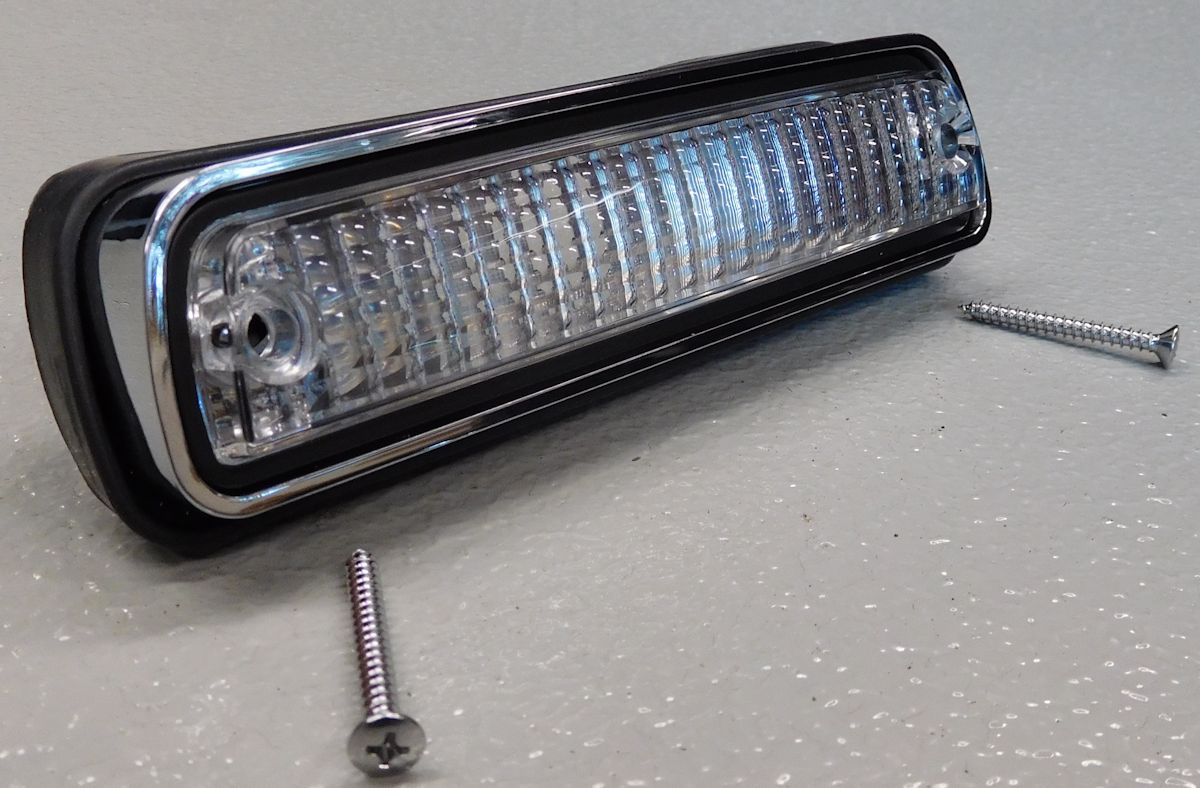

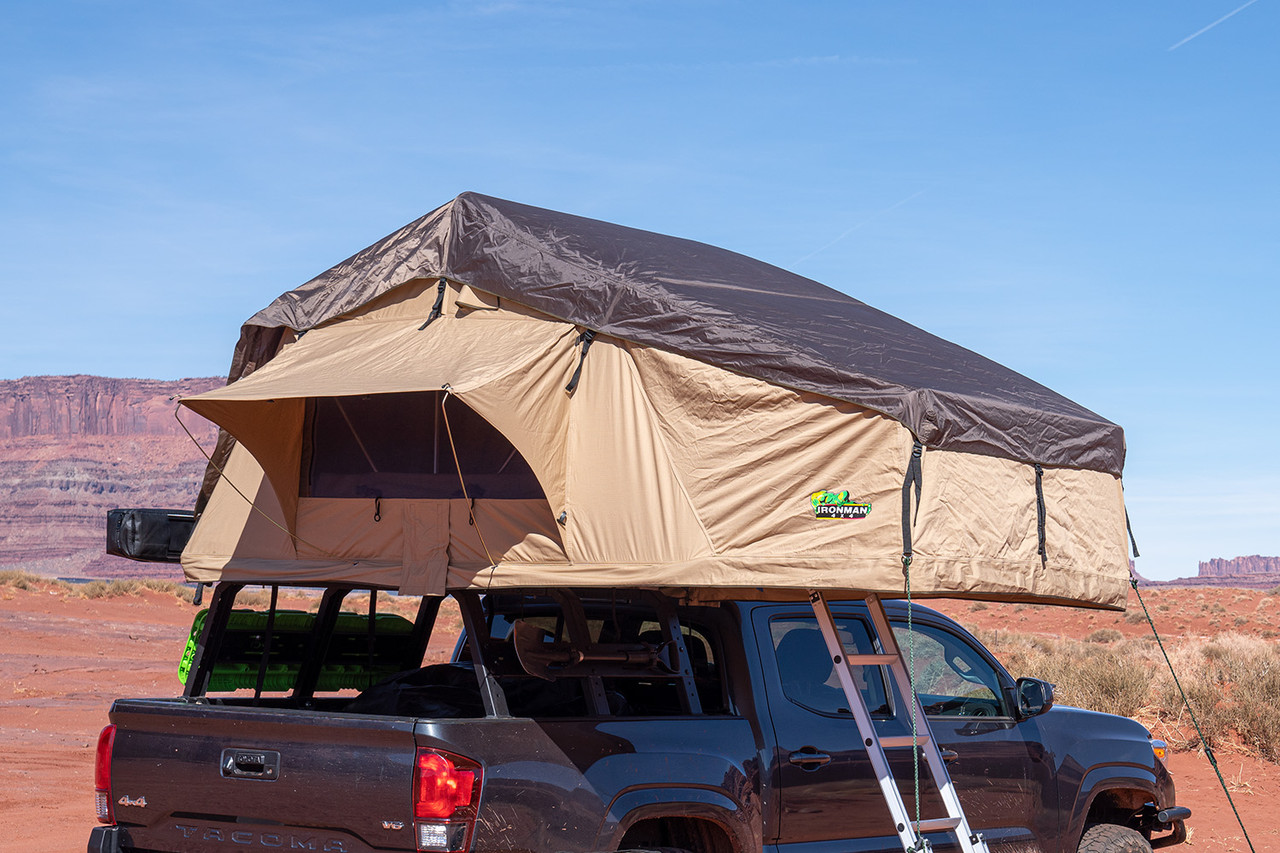






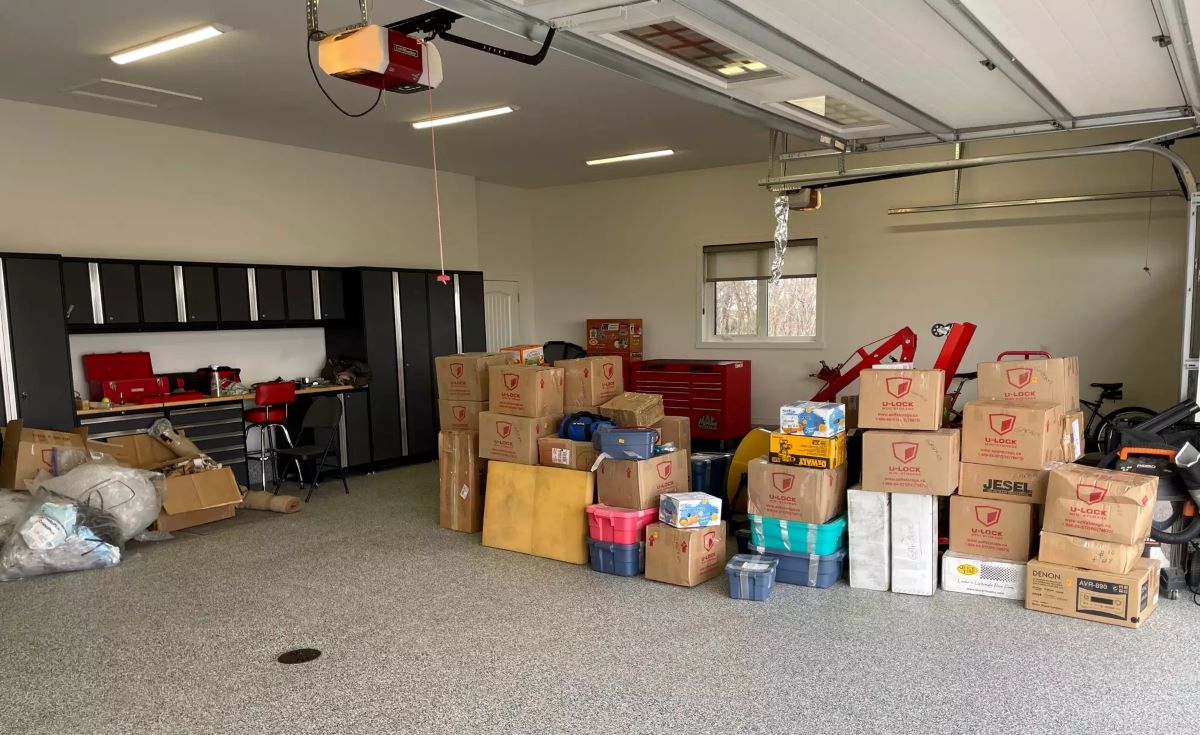

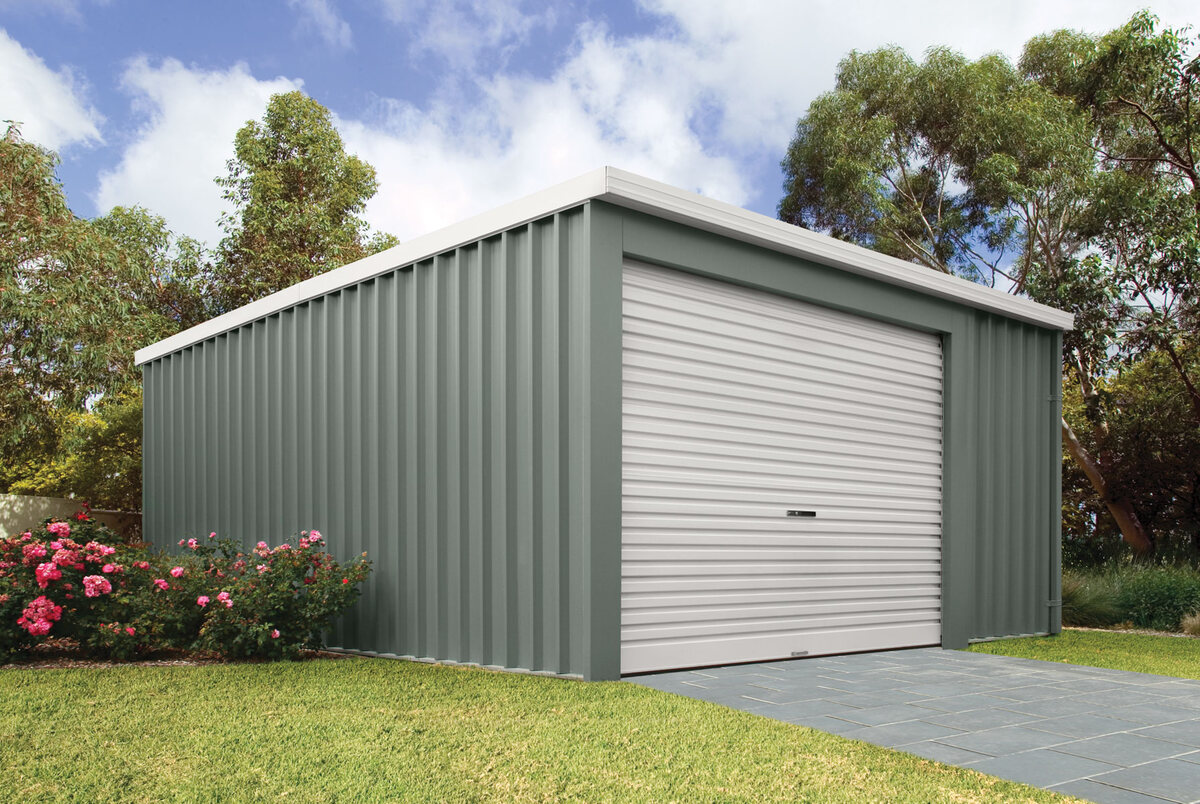


0 thoughts on “How To Store Roof Cargo Box”